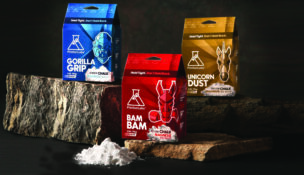Colorado Leads the Good Food Movement
Local businesses commit to changing the food system for the better
Sara Brito //November 16, 2017//


Colorado Leads the Good Food Movement
Local businesses commit to changing the food system for the better
Sara Brito //November 16, 2017//

With ingredient transparency becoming the most important item on any menu, strategic rating systems promise to move the restaurant industry forward by underscoring how chefs and restaurants are building a better food system and supporting state, regional and national food economies.
Good food is defined by its benefit to every link in the food chain: the environment, plants and animals, producers, purveyors, restaurants – and their workers – and eaters. Minimum threshold guidelines for self-reporting good food purchases for each of the six food categories including:
- FLOUR + GRAINS
- DAIRY + EGGS
FISH + SEAFOOD - MEAT + POULTRY
- FRUITS + VEGGIES
- OTHER
In an effort to change the way we view and value food, I founded the Good Food Media Network, a 501(c)(3) nonprofit dedicated to educating eaters by cultivating a conversation and community around the people and businesses changing the food system for good. With this mission in mind, the Good Food Media Network produced and released the inaugural Good Food 100 Restaurants list, an annual strategic rating system that measures the impact of chefs and restaurants purchasing decisions and sustainable business practices. In the list’s first year, 90 restaurants from every region of the country participated – self-reporting their buying data from the previous year.
To complement the inaugural list, we also partnered with the Business Research Division (BRD) of the Leeds School of Business at the University of Colorado Boulder and used the data to produce an economic analysis measuring the participating restaurants’ food purchasing decisions on local, regional and national economies.
The report found that the overall food purchases by the 90 participating Good Food 100 Restaurants totaled $94.8 million in 2016, of which $68.1 million came from good food purchases. To top it off, the $68.1 million in good food purchases resulted in a $199 million economic impact on the U.S.
Restaurants in the far west region and the Rocky Mountain region reported the most in-region purchases. The far west region reported $27.4 million in food purchases, which had a $54.3 million total regional economic impact. Restaurants in the Rocky Mountain region reported $8.7 million of in-region food purchases, translating to $17.3 million in total regional economic benefits. In Colorado alone, the good food purchases by the participating restaurants had a remarkable $15.1 million effect on the state economy.
These numbers are truly game-changing. They not only demonstrate the visionary power of chefs and restaurants to fuel environmental and social change, but also show the effect the good food systems have on the economic growth.
It has been especially rewarding to see how supportive and receptive Colorado chefs and restaurants have been to the Good Food 100 efforts. This comes as no surprise since Coloradans have been at the forefront of sustainability and the slow food movement for years. From Alex Seidel, Kelly Whitaker, Kimbal Musk to Jen Jasinski, Paul Reilly and many more, Colorado chefs not only took the Good Food 100 survey but have shown that they are committed to menu transparency and improving the food system for generations to come. These chefs and restaurateurs truly understand the importance of fresh and nutritious food for all.






















